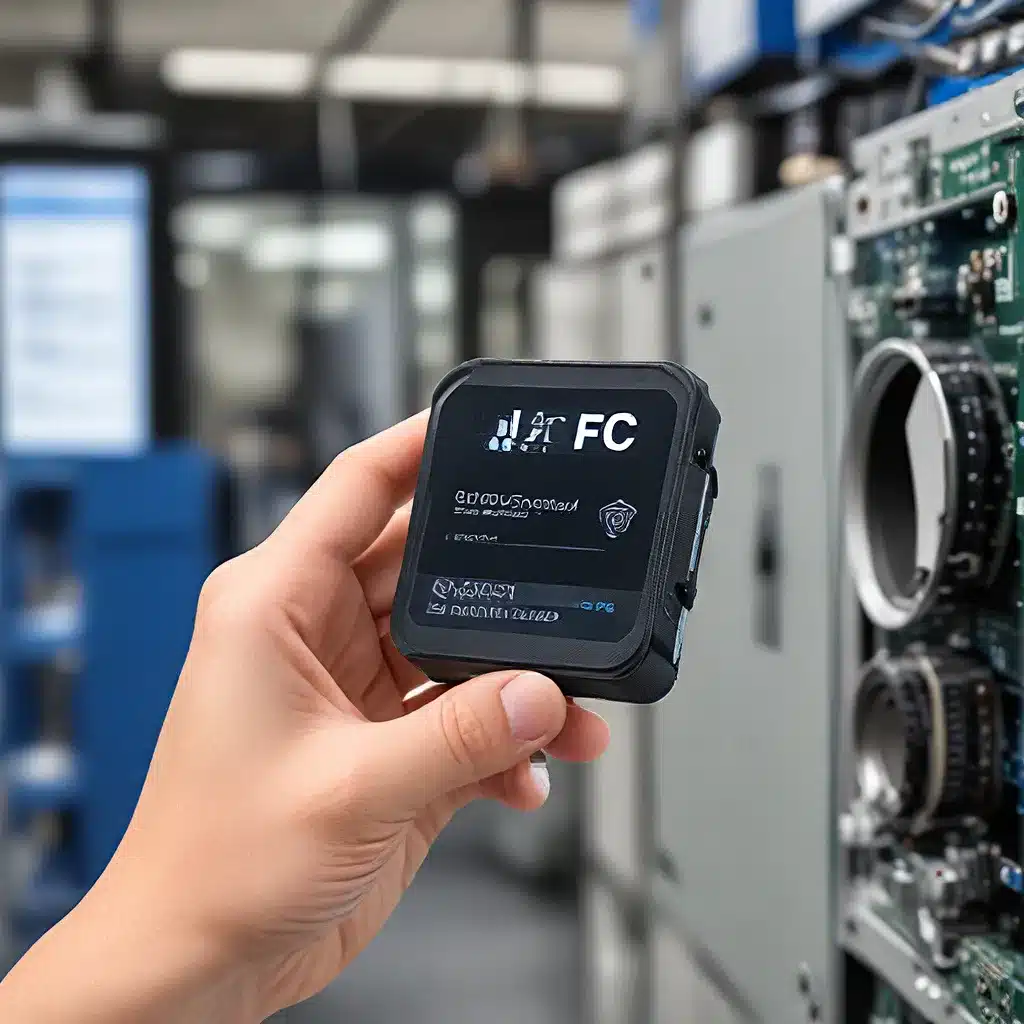
Revolutionizing Sensor Networks with NFC Integration
As the Internet of Things (IoT) continues to expand its reach, the design and functionality of sensor networks have become increasingly critical. One innovative development that is gaining traction is the integration of Near-Field Communication (NFC) technology into sensor nodes, unlocking a new era of enhanced IoT capabilities.
NFC is a short-range wireless communication protocol that enables seamless data exchange between compatible devices in close proximity. By incorporating NFC into sensor networks, designers can leverage its unique advantages to address a range of challenges, from improved energy management to enhanced security and user interaction.
Federal government websites have recognized the potential of NFC-enabled sensor networks, highlighting their ability to facilitate secure data transfer and streamline device configuration. This integration can have far-reaching implications, revolutionizing the way we interact with and manage IoT ecosystems.
Enhancing Energy Efficiency in Sensor Nodes
One of the primary benefits of integrating NFC into sensor networks is the potential for improved energy management. Sensor nodes, particularly those deployed in remote or hard-to-reach locations, often face challenges in terms of power consumption and battery life. NFC technology, known for its low-power requirements, can provide a solution to this problem.
By leveraging NFC’s efficient data transmission capabilities, sensor nodes can reduce the frequency and duration of wireless communication, consequently lowering overall power consumption. This is especially beneficial for battery-powered devices, as it can significantly extend their operational lifespan without compromising performance.
Furthermore, the close-range nature of NFC allows for targeted and controlled data exchange, minimizing the need for energy-intensive, long-range wireless protocols. This targeted approach not only enhances energy efficiency but also reduces the risk of unauthorized access, improving the overall security of the sensor network.
Enabling Seamless Device Configuration and Interaction
The integration of NFC into sensor networks also offers advantages in terms of device configuration and user interaction. NFC’s intuitive “tap-and-go” functionality allows for quick and easy pairing and configuration of sensor nodes, eliminating the need for complex setup procedures.
Federal government websites have highlighted the importance of streamlined device interaction, particularly in the context of smart home and industrial IoT applications. NFC-enabled sensor nodes can be effortlessly configured and integrated into existing systems, reducing the technological barriers for end-users and facilitating widespread adoption.
Moreover, NFC’s user-friendly interface enables seamless interaction between sensor nodes and mobile devices, such as smartphones and tablets. This allows for real-time monitoring, remote control, and data visualization, empowering users to actively engage with and manage their IoT environments.
Enhancing Security in IoT Ecosystems
The integration of NFC technology into sensor networks also offers enhanced security features, addressing a critical concern in the rapidly evolving IoT landscape.
The https protocol ensures that data exchanged between NFC-enabled sensor nodes and other devices is encrypted and transmitted securely, mitigating the risk of data breaches and unauthorized access.
Furthermore, the short-range nature of NFC communication limits the potential for eavesdropping and intercepting sensitive information, providing an additional layer of protection for IoT ecosystems. This is particularly important in applications where sensitive data, such as medical records or industrial control parameters, is being transmitted.
By incorporating NFC technology, sensor network designers can strengthen the overall security posture of their IoT solutions, ensuring the confidentiality, integrity, and availability of critical data.
Exploring NFC-Enabled Sensor Network Applications
The integration of NFC into sensor networks opens up a wide range of innovative applications across various industries, from smart homes and healthcare to industrial automation and environmental monitoring.
In the realm of smart home technology, NFC-enabled sensor nodes can facilitate seamless integration of household devices, enabling intuitive control and real-time monitoring through mobile app interfaces. This can lead to enhanced energy efficiency, improved security, and a more personalized user experience.
Similarly, in the healthcare sector, NFC-enabled sensor networks can revolutionize remote patient monitoring, allowing for secure data collection and seamless integration with electronic medical records. This can enhance patient outcomes, reduce hospital readmissions, and optimize resource allocation within the healthcare system.
Sensor Networks have also found applications in industrial automation, where NFC-enabled sensor nodes can facilitate real-time equipment monitoring, predictive maintenance, and streamlined asset management. This can lead to increased operational efficiency, reduced downtime, and improved safety in industrial environments.
Moreover, in the realm of environmental monitoring, NFC-enabled sensor networks can enable efficient data collection and secure transmission of environmental data, such as air quality, water levels, and wildlife tracking. This can support informed decision-making, resource management, and environmental conservation efforts.
Conclusion
The integration of NFC technology into sensor networks represents a transformative development in the world of IoT. By leveraging the low-power, secure, and user-friendly features of NFC, sensor network designers can enhance energy efficiency, improve security, and enable seamless device interaction and configuration.
As the IoT ecosystem continues to evolve, the advancements in NFC-enabled sensor networks are poised to play a crucial role in revolutionizing the way we manage, interact with, and secure our connected environments. From smart homes and healthcare to industrial automation and environmental monitoring, the integration of NFC offers a promising path towards a more efficient, secure, and user-centric IoT landscape.